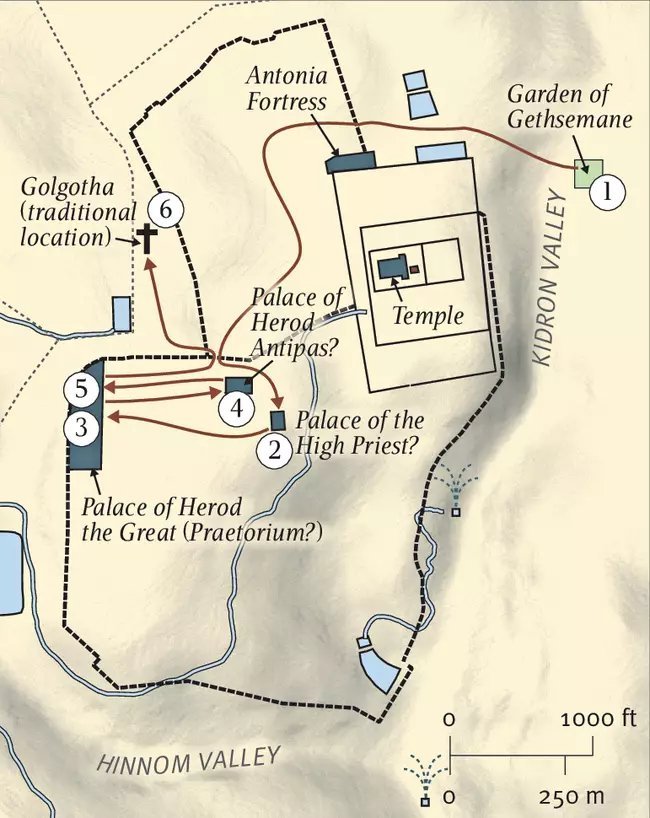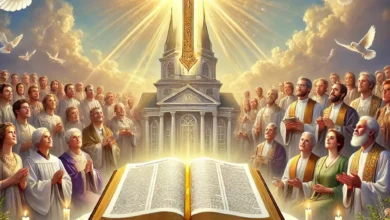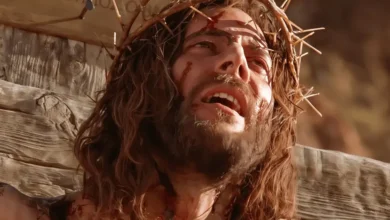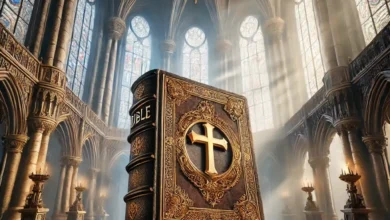
Where Was Jesus Crucified? Location of Golgotha
Golgotha in the Bible – the place of Jesus’ crucifixion
And when it was the day of preparation for the Passover, about the sixth hour, he said to the Jews, “Behold your king!” But they shouted: “Get the slave out!” Crucify him!” Pilate said to them: “Shall I crucify your king?” The priests answered coldly: “There is no other king for us except Caesar!” So he handed him over to them to be crucified. So they took Jesus and took him outside. And he took up his cross, and went out to a place called Kapalgah, which in Hebrew is called Golgotha. There they crucified him with two others, one on the right and one on the left, and Jesus in the middle.” (John 19:14-18 Bible translation)
Golgotha, the skull-shaped hill in biblical Jerusalem, is where Jesus was crucified. It is mentioned in all four gospels. This place, also known as Calvary, was just outside the borders of Jerusalem where Jesus was crucified along with two thieves, one of whom confessed that Christ was God and was saved that day. Its traditional venerated site, designated by Queen Helena, mother of Constantine the Great, in 325 is on the site of the Church of the Holy Sepulcher.
The Gospels use the Greek word “keranion” when referring to the place outside Jerusalem where Jesus was crucified (Mark 15:22); So they brought Jesus to a place called Golgotha (which means the place of the skull). Cranium is often translated as “skull” in English, but more accurately refers to “cranial bone”, the part of the skull that encloses the brain. In Latin, this word is translated as “calvaria locus”, from which the English word “calvary” is derived. Thus, the various terms used when describing the place of Christ’s crucifixion, such as “Golgotha” and “Calvary,” originate from the Hebrew and Latin translations, respectively.

فرست محتوا
Where is Golgotha?
Golgotha, also called “Calvary” in Latin, is commonly associated with the traditional site of Christ’s crucifixion, now located in the Church of the Holy Sepulcher in the Christian Quarter of Jerusalem. This church is located inside the walls of the old city of Jerusalem. Below is a diagram from Wikipedia showing how the Church of the Holy Sepulcher was built on a hill called Golgotha:
Map of Golgotha and more
(Map source: English Standard Society Research Bible)
Regarding the location of the crucifixion (which is associated with the site of the tomb), the New Testament gives us no indication. Indeed, those who abandon tradition have suggested locations all over the city. But today there are two dominant views:
(1) That the place of crucifixion, or at least the tomb itself, is within the boundaries of the Church of the Holy Sepulcher.
(2) that a prominent round grassy mound above Jeremiah’s Cave, northeast of present-day Damascus Gate, is very likely the actual site of Golgotha. Here, it is not possible to deal with the whole issue, which requires a long and detailed explanation. But an excellent review of the whole evidence can be found in Golgotha and the Holy Sepulcher by the late Sir Charles W. Wilson of the PEF.

What is the meaning of Golgotha?
According to Smith’s Bible Dictionary, Golgotha is the Hebrew name for the place where Jesus Christ was crucified. (Matthew 27:33; Mark 15:22; John 19:17). These three evangelists interpret it to mean “the place of the skull”. There are two explanations for this name:
(1) That this place was a spot for ordinary executions and was therefore full of skulls
(2) This name may be derived from the appearance of the place itself, a hill or hill without vegetation, round and skull-like. And for this reason it corresponds to the popular phrase “Mountain of Calvary” (for which there is no direct evidence).
Regardless of which of these explanations is correct, Golgotha seems to have been a well-known place.
Various reasons have been suggested for the name Golgotha or “Skull”, including:
This is the place where skulls have been found, and probably because of this, it was a public place of execution. This tradition appears to have originated with Jerome (AD 346-420), who refers (3) to condemn it and says that “outside the city, without gates, there are places where the heads of criminals are hanged.” It is cut off and they took the name Jaljalah – that is, the beheaded ones.
Is Golgotha a holy place?
Yes, in short, it is. Many Christians from different denominations around the world travel to visit and pay respect to the place where Christ was crucified, buried and resurrected, which is now located in the Church of the Holy Sepulcher.
According to traditions dating back to the 4th century, it contains two holy places in Christianity: the place where Jesus was crucified, at a place called Golgotha, and the empty tomb, where he was buried and reburied. came alive
Can you visit Golgotha now?
Yes, in general, you can visit the Church of the Holy Sepulcher, assuming you are allowed to travel to Jerusalem at that time. The church is located in the Christian Quarter of the Old City, where Christ was crucified, buried and resurrected. It is one of the most revered places in Christianity and an important pilgrimage destination.
Today in the article : Where Was Jesus Crucified? Location of Golgotha? We reviewed useful information about the Bible and the way of Jesus. If you wish, you can view other articles of Ali Vahidi about Christianity





